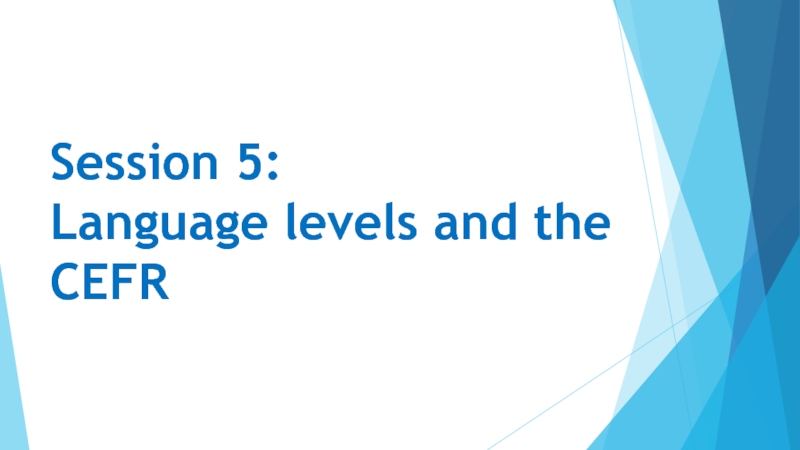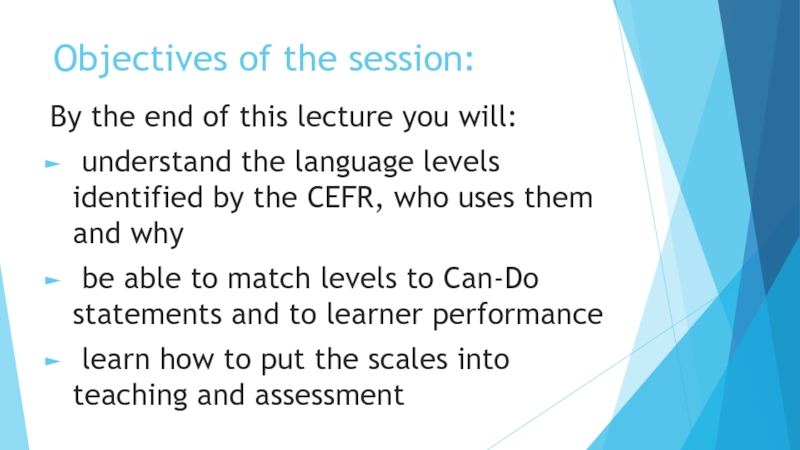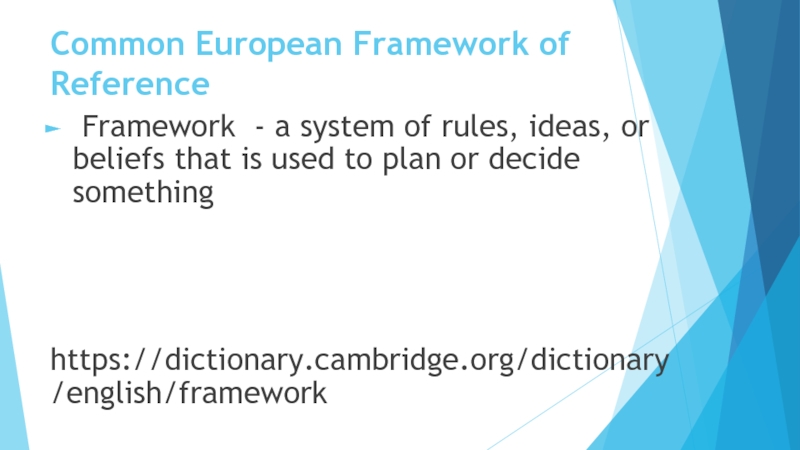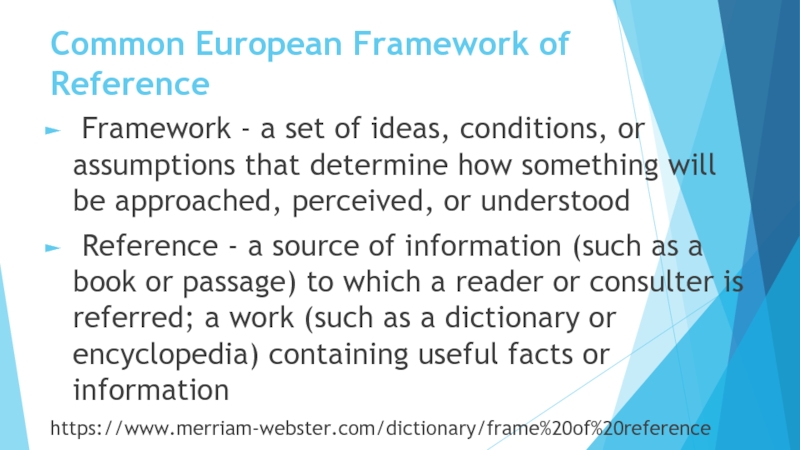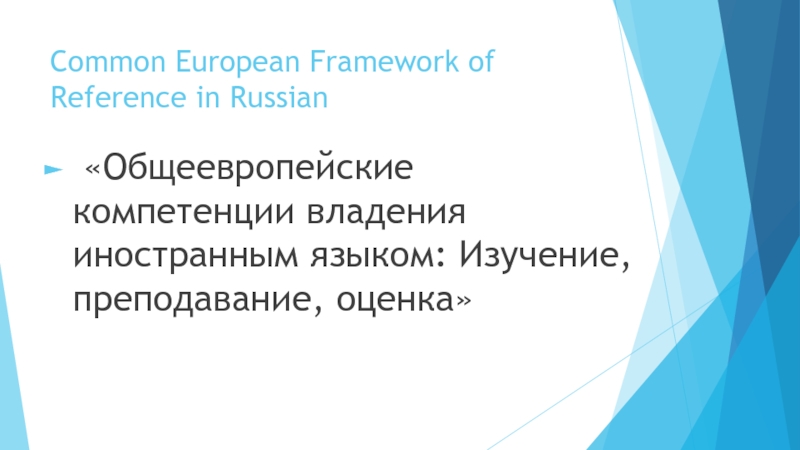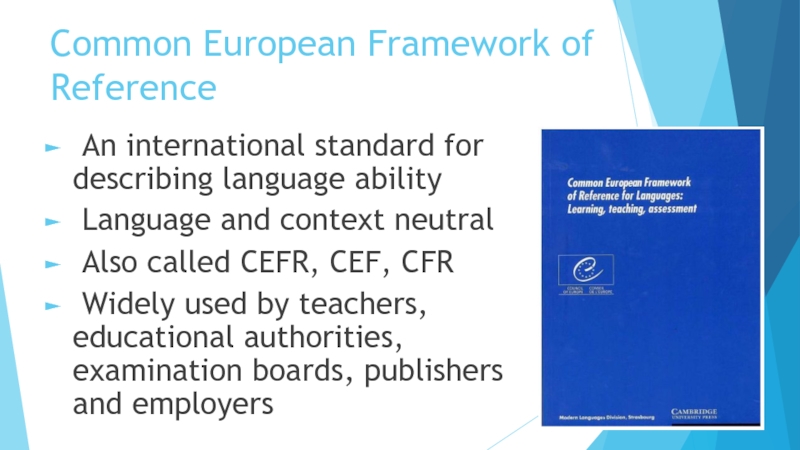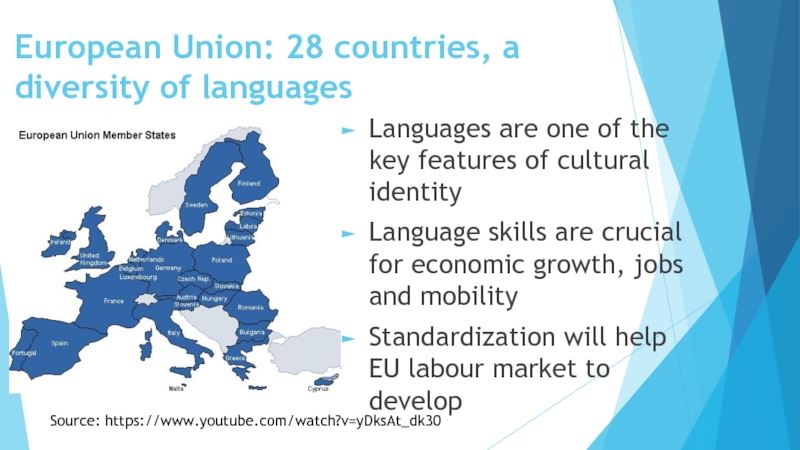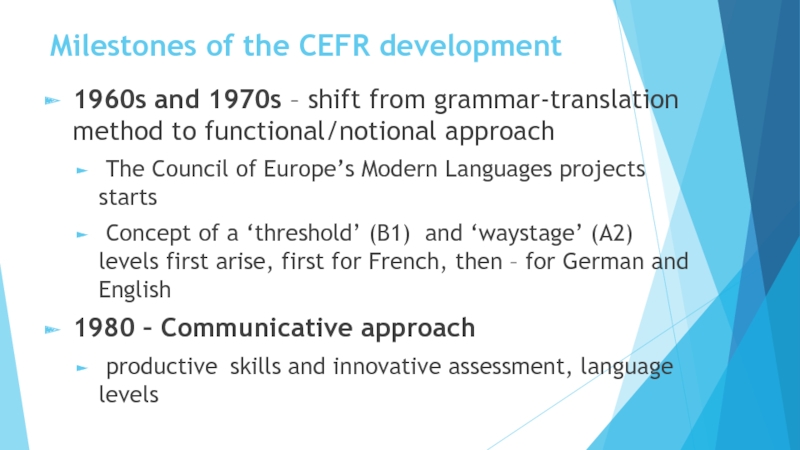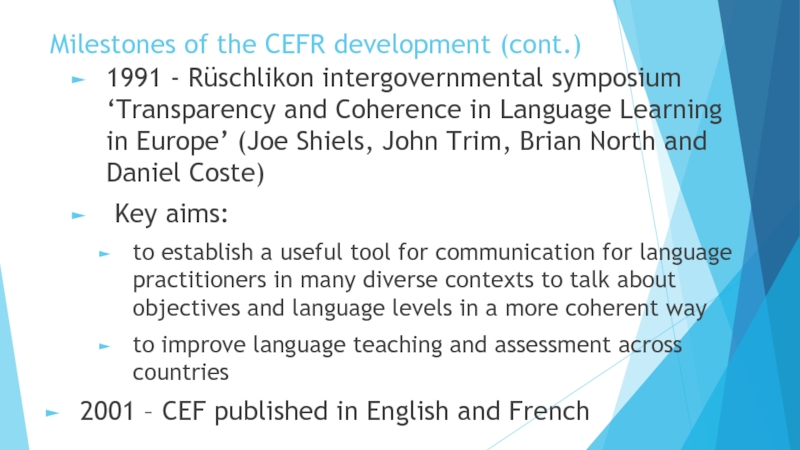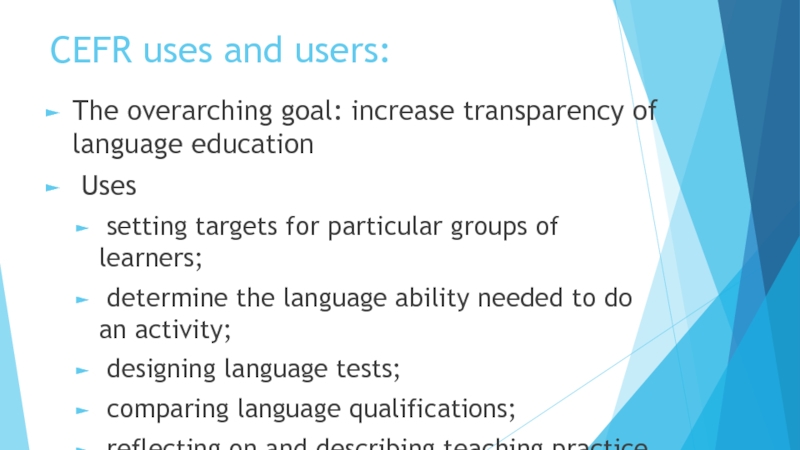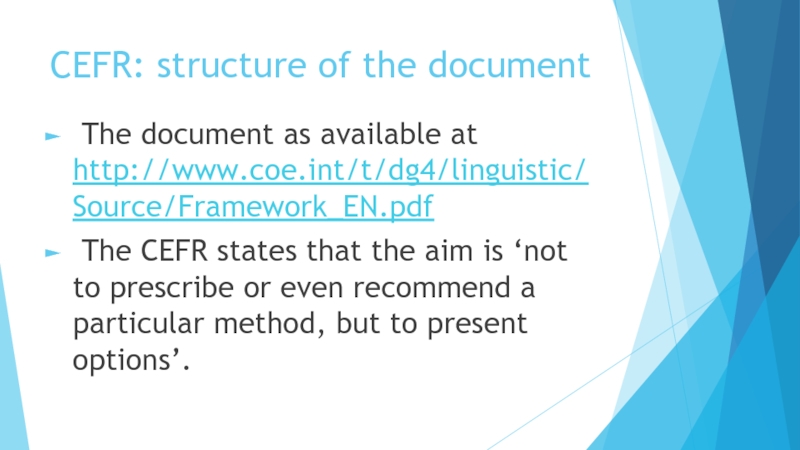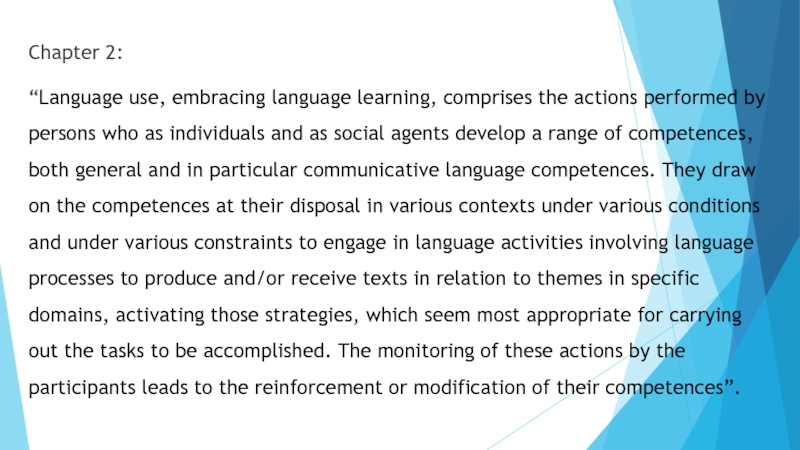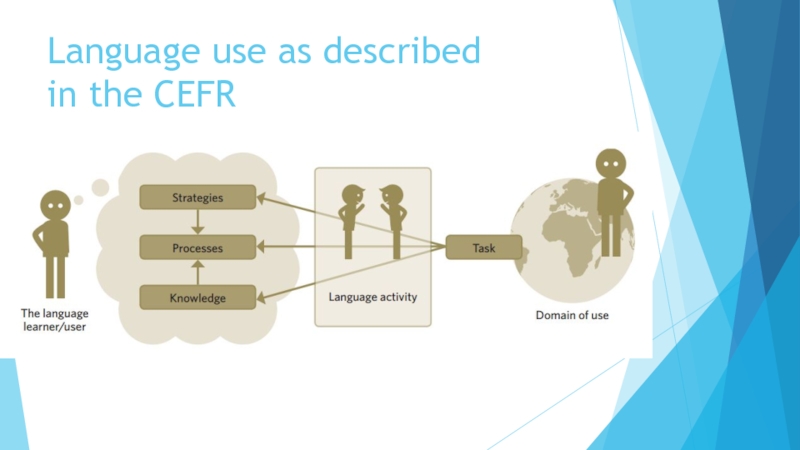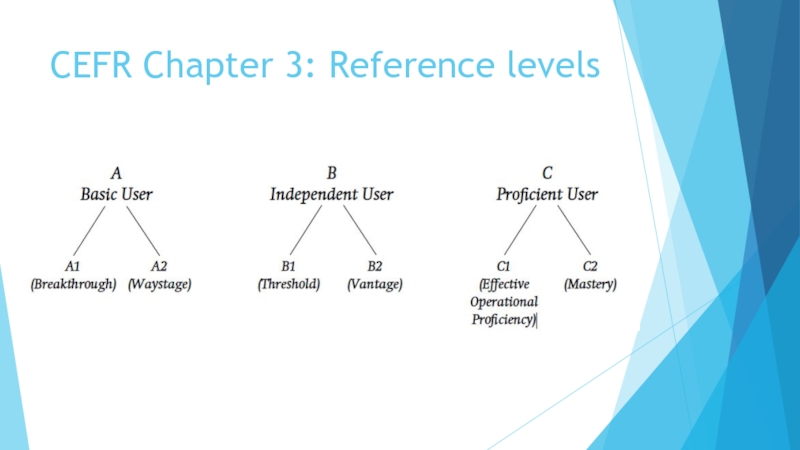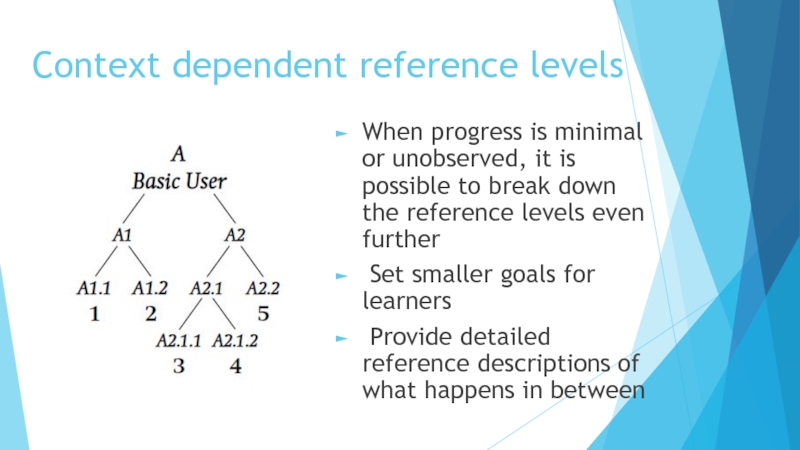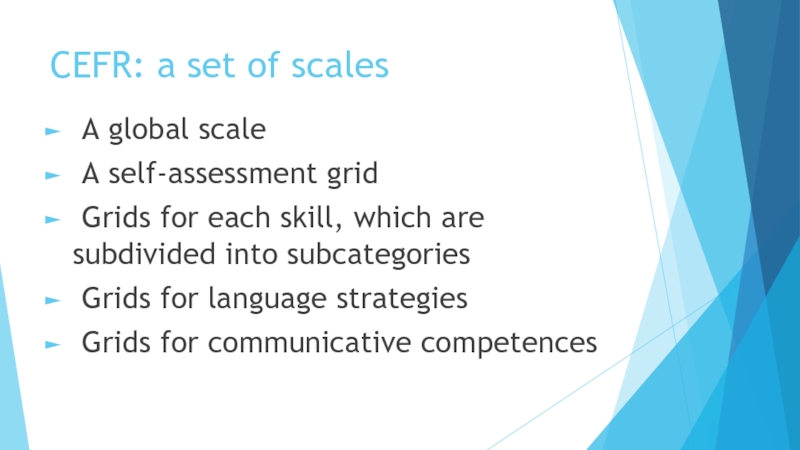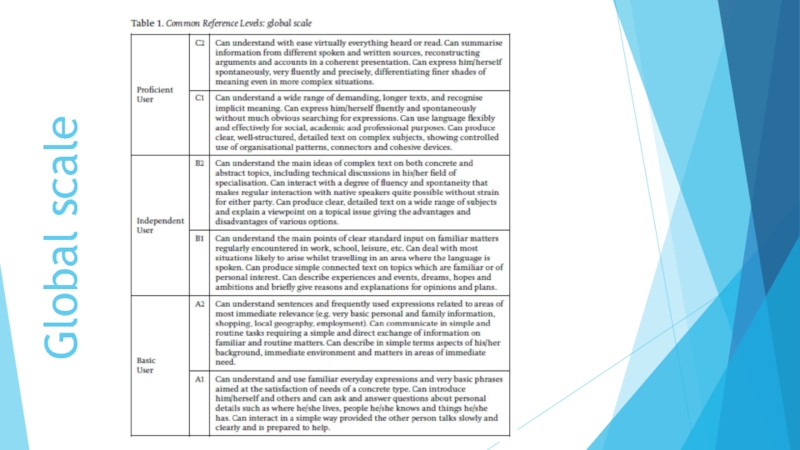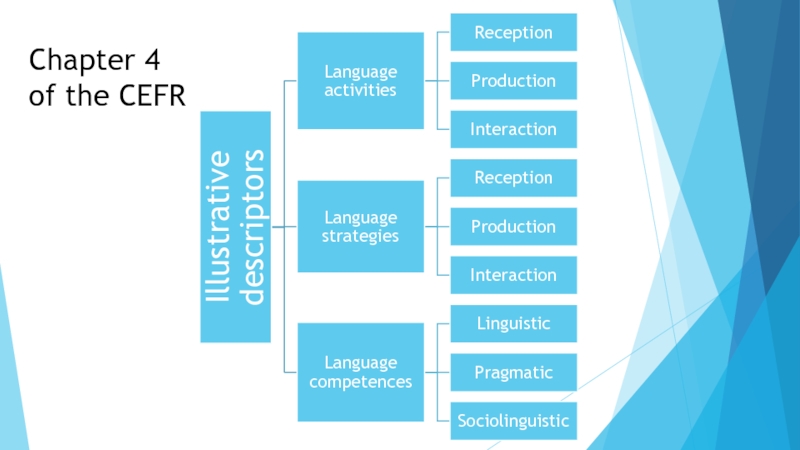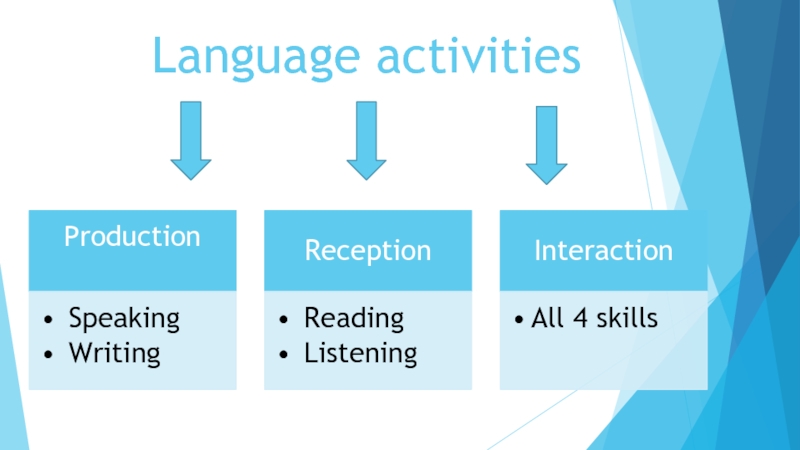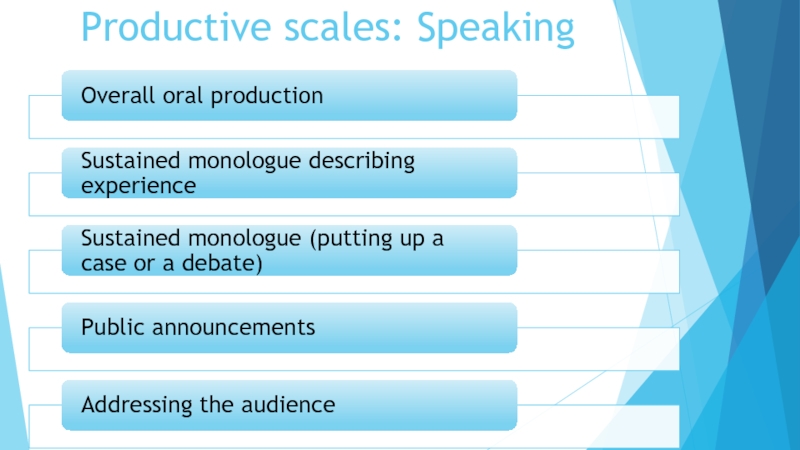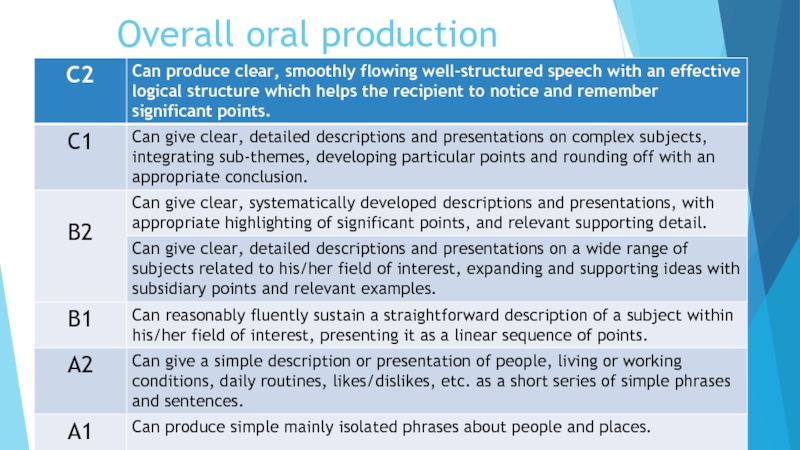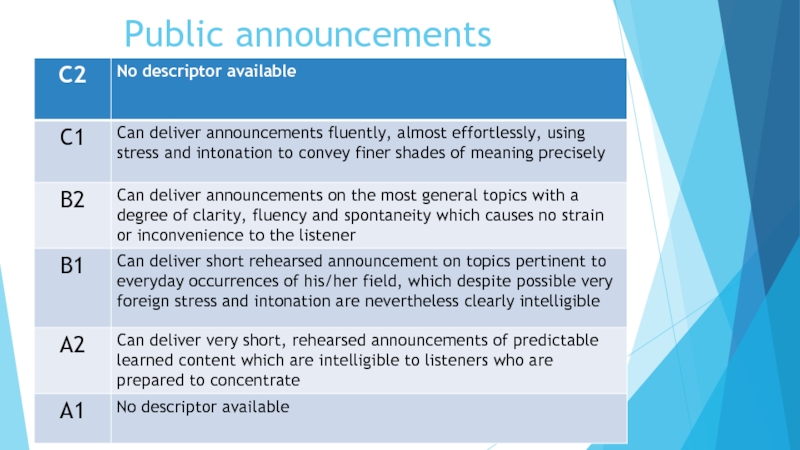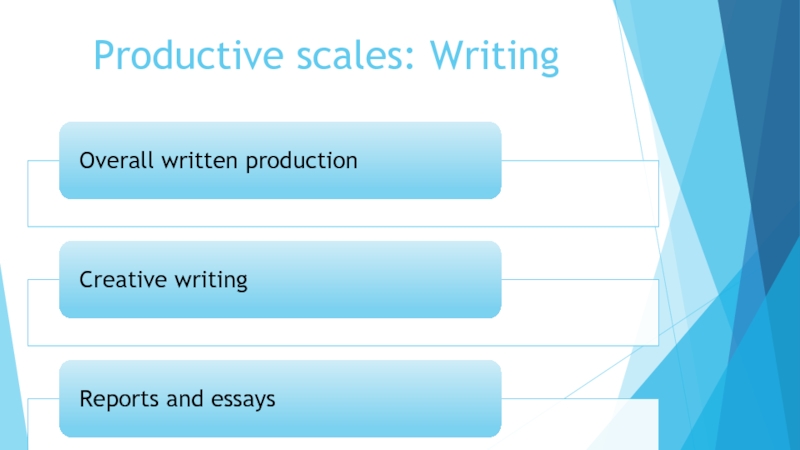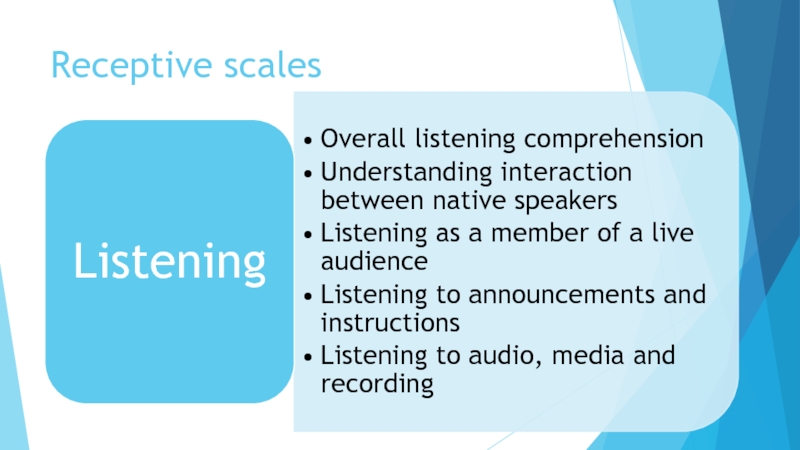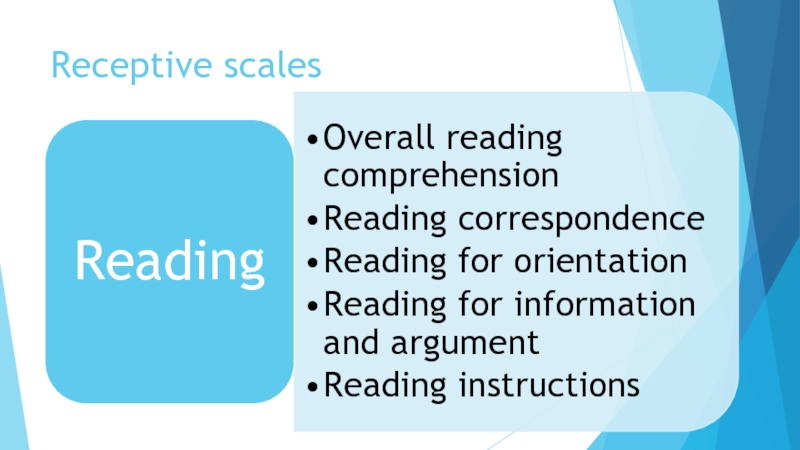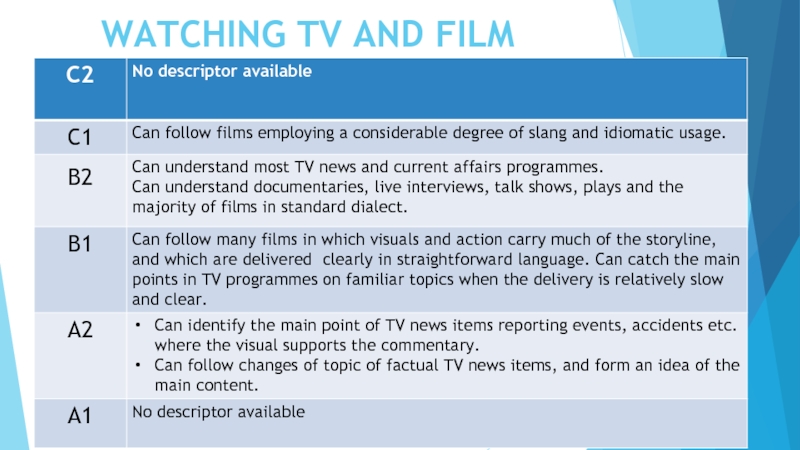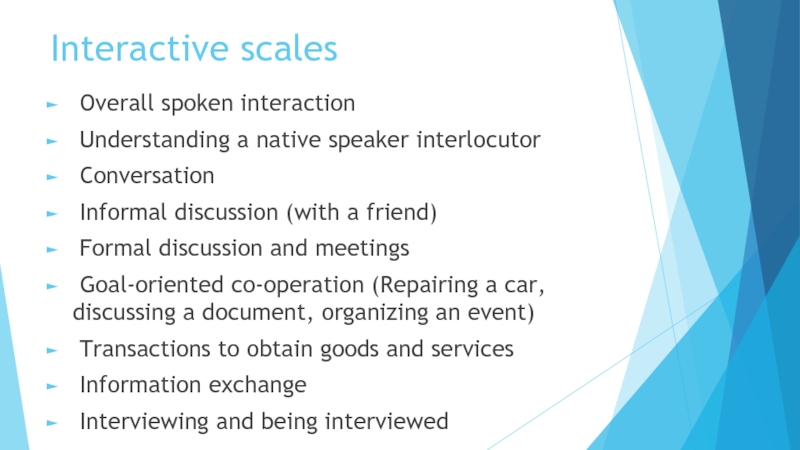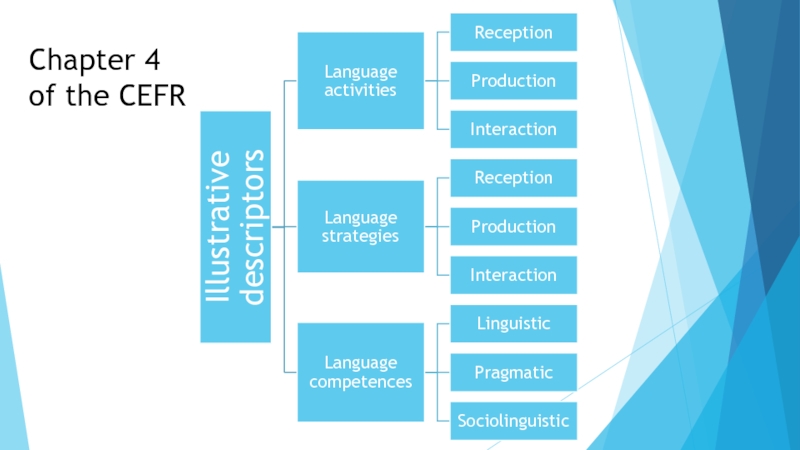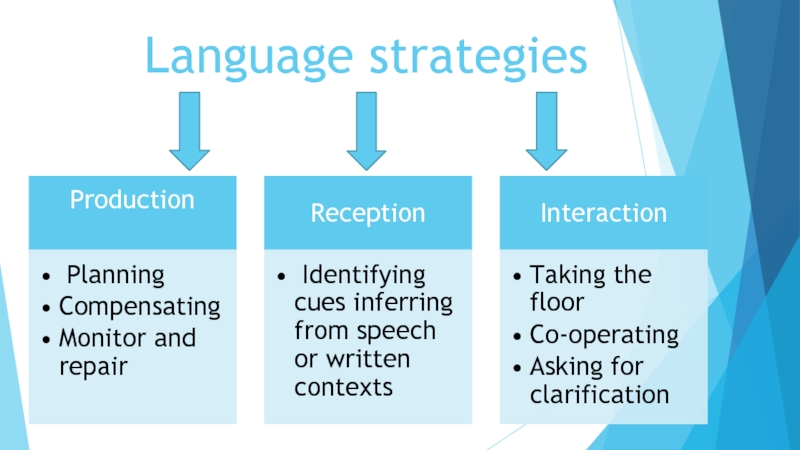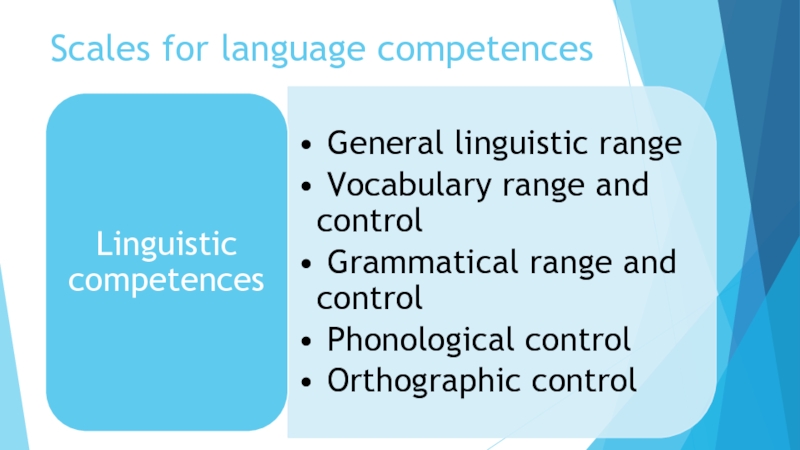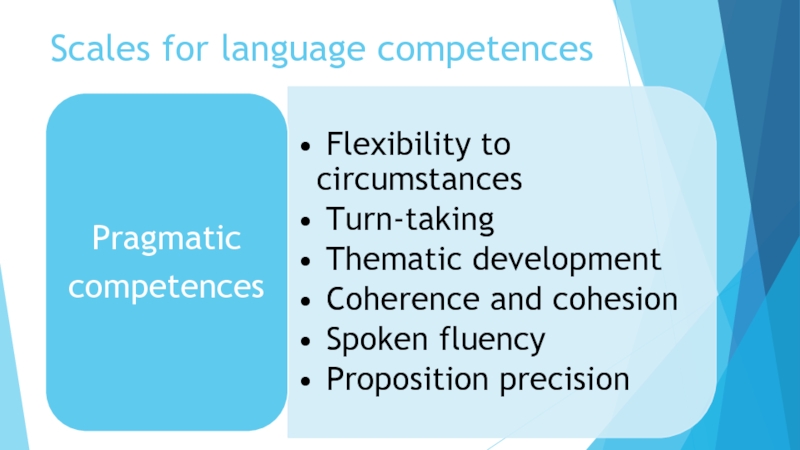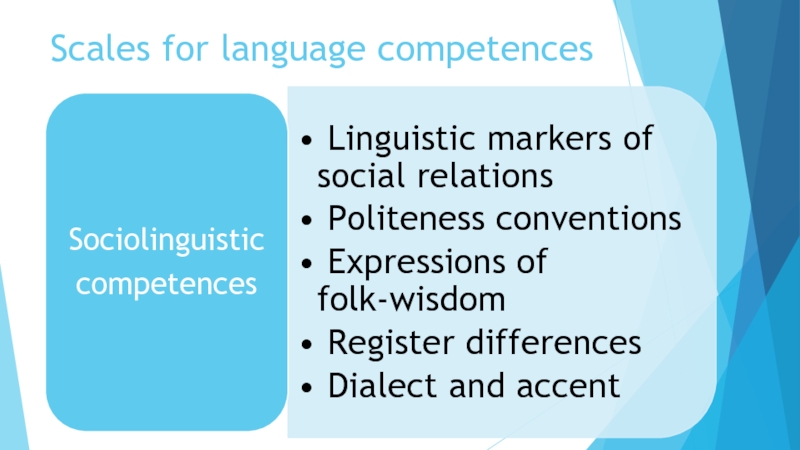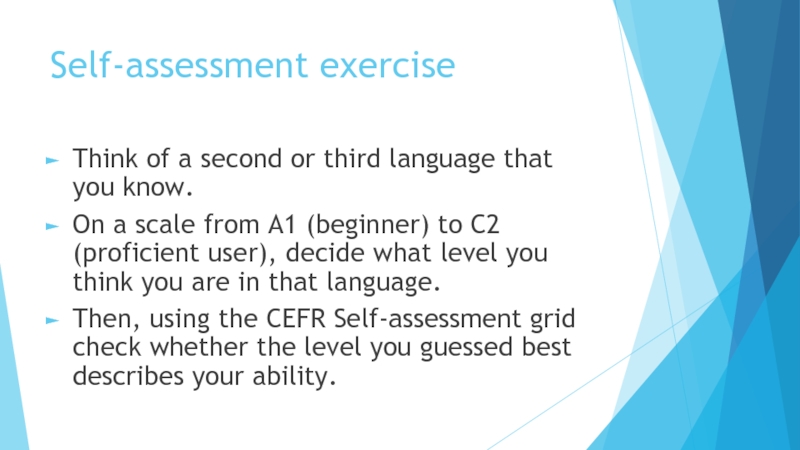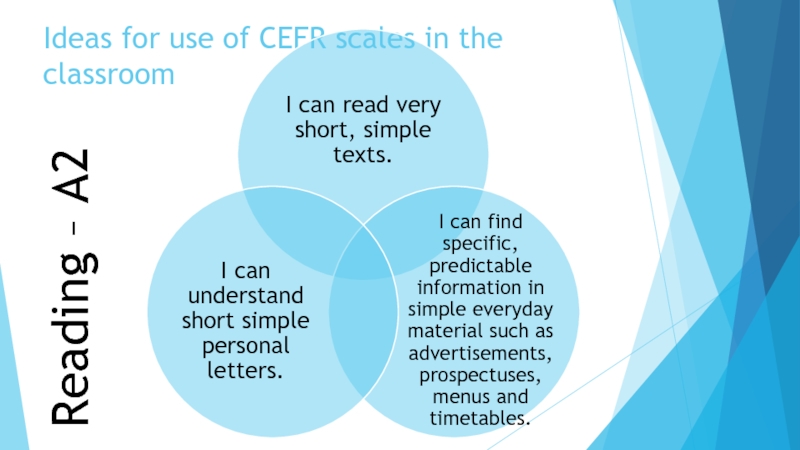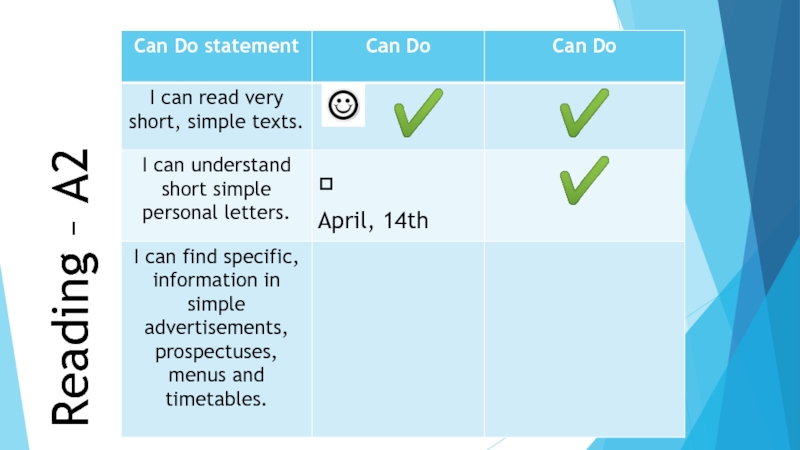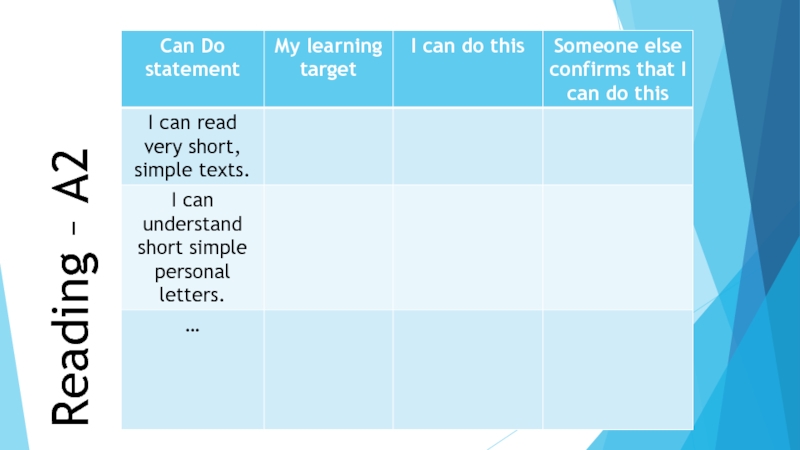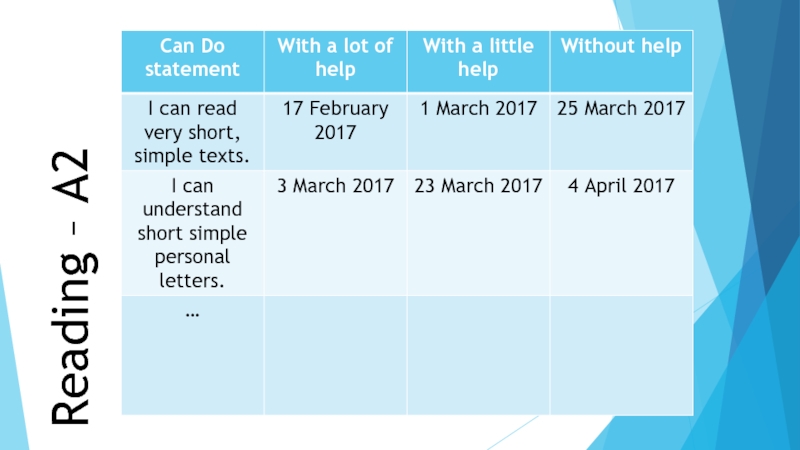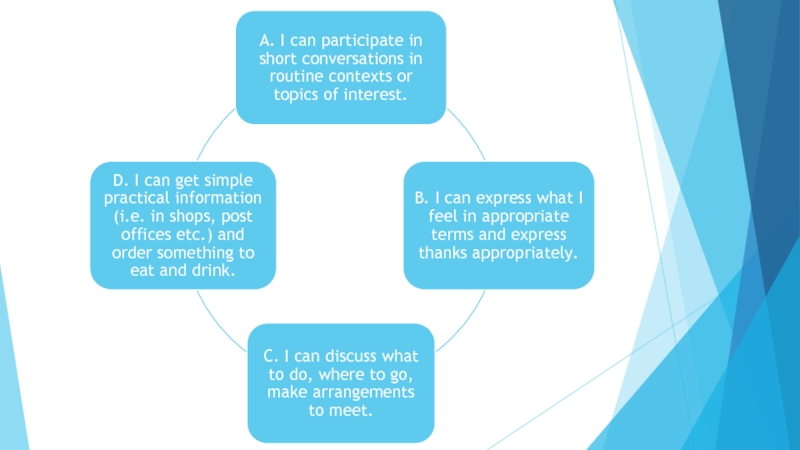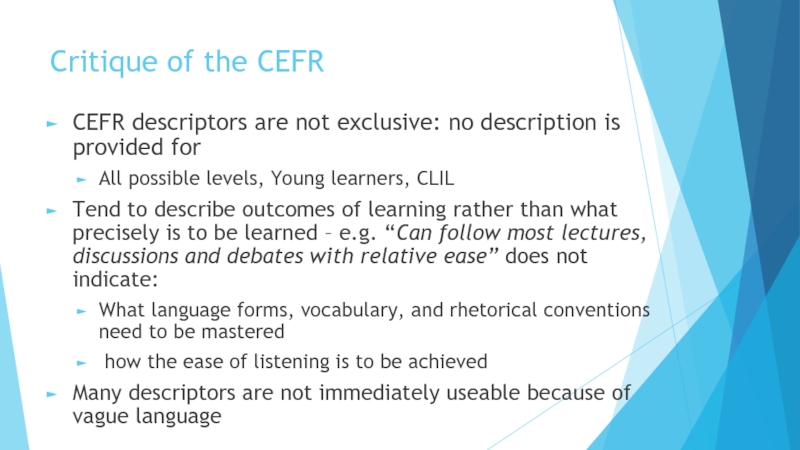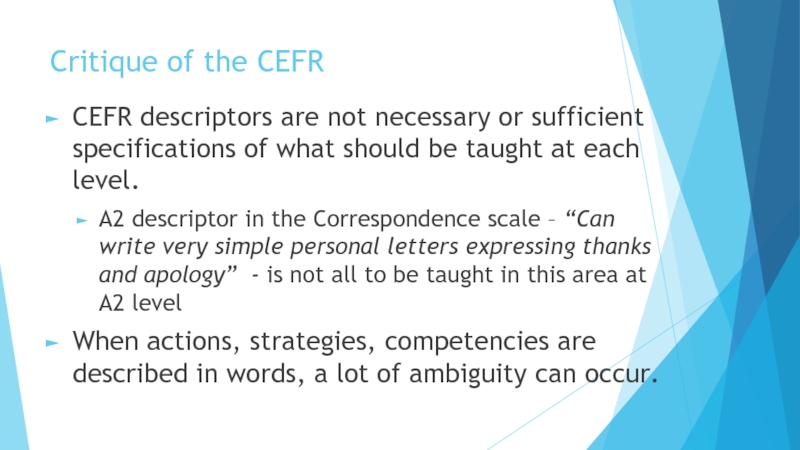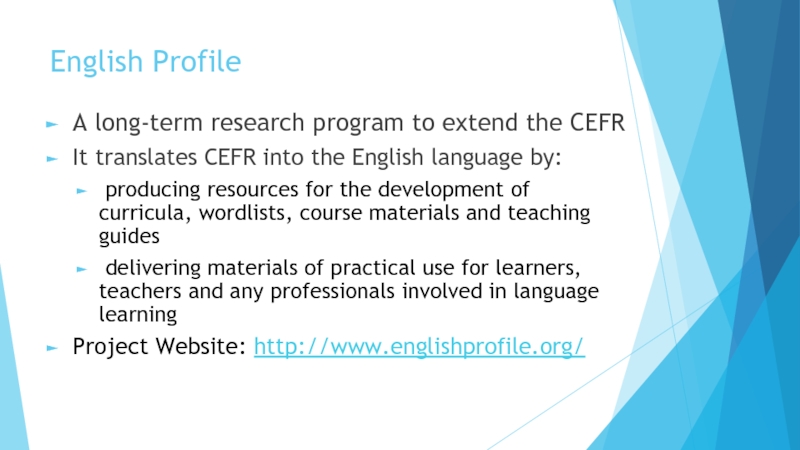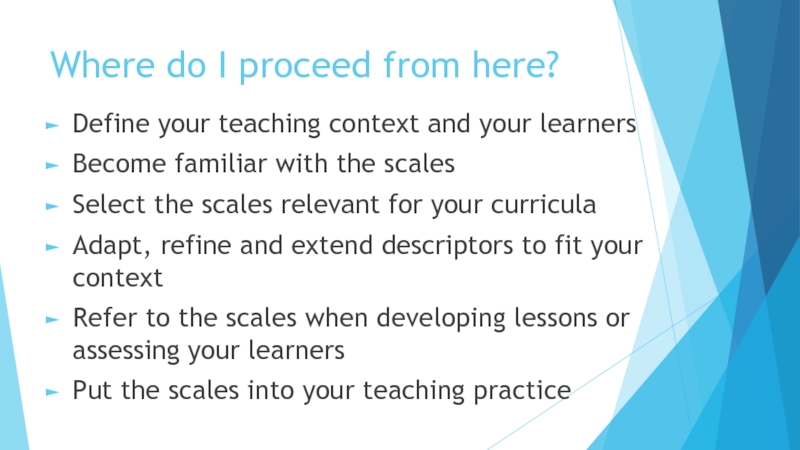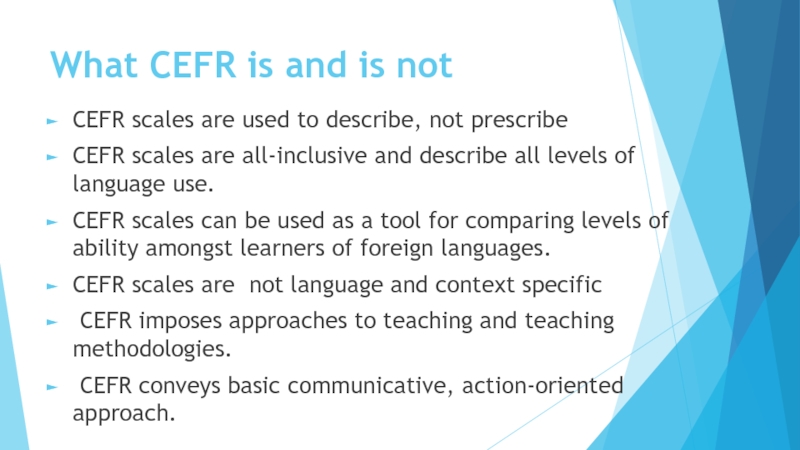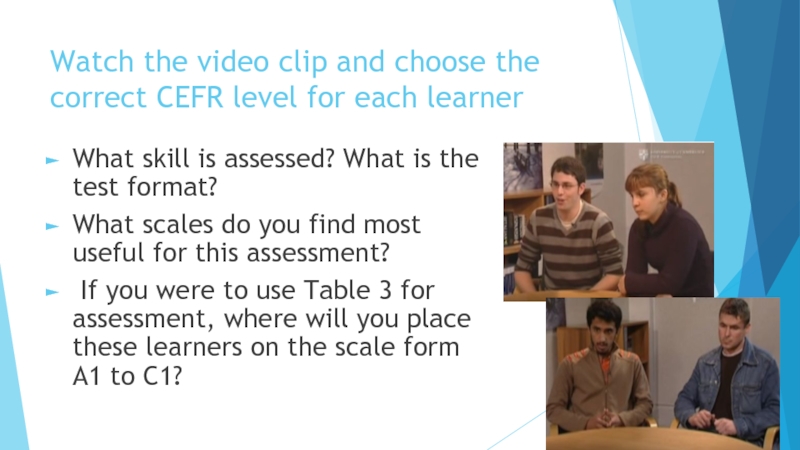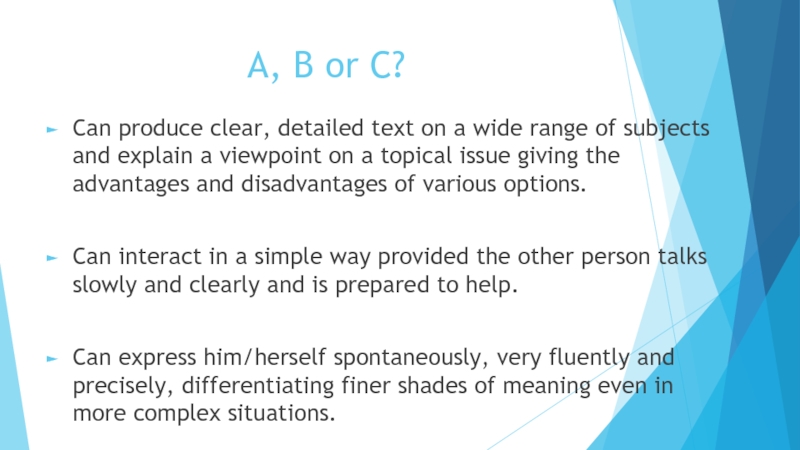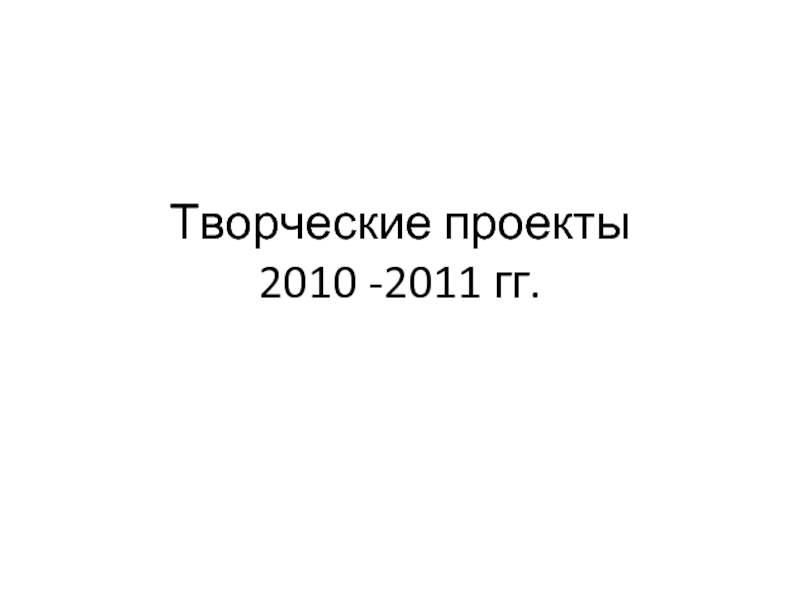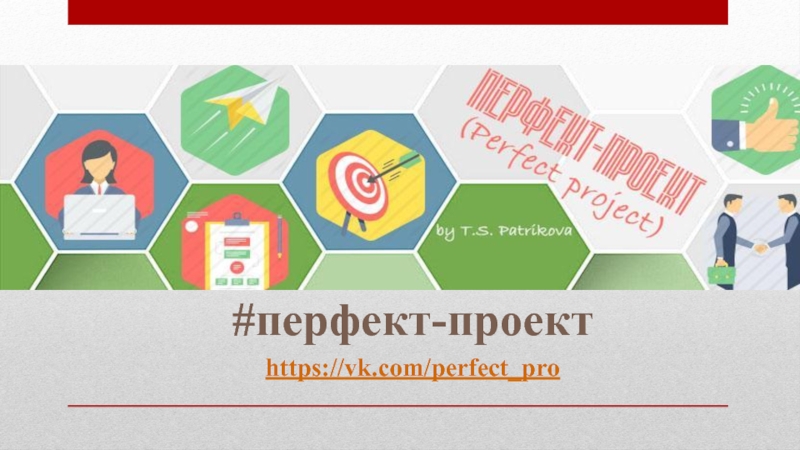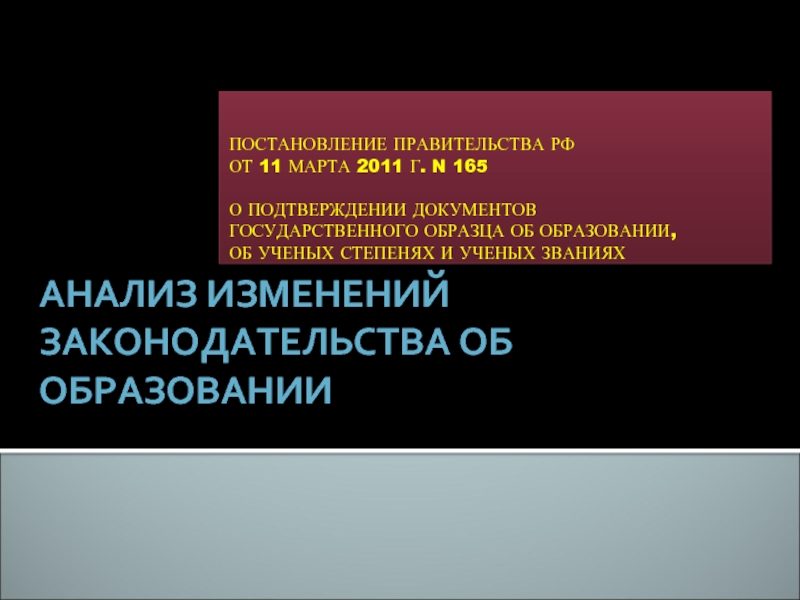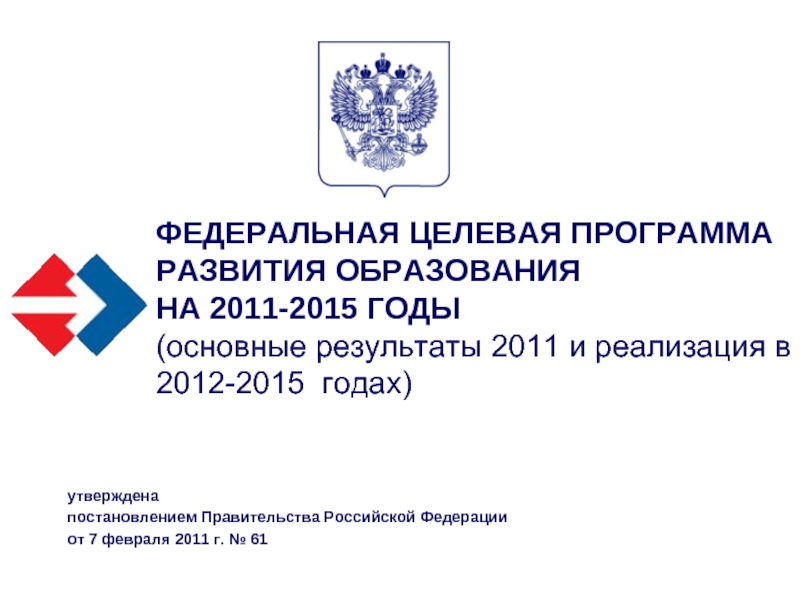- Главная
- Разное
- Дизайн
- Бизнес и предпринимательство
- Аналитика
- Образование
- Развлечения
- Красота и здоровье
- Финансы
- Государство
- Путешествия
- Спорт
- Недвижимость
- Армия
- Графика
- Культурология
- Еда и кулинария
- Лингвистика
- Английский язык
- Астрономия
- Алгебра
- Биология
- География
- Детские презентации
- Информатика
- История
- Литература
- Маркетинг
- Математика
- Медицина
- Менеджмент
- Музыка
- МХК
- Немецкий язык
- ОБЖ
- Обществознание
- Окружающий мир
- Педагогика
- Русский язык
- Технология
- Физика
- Философия
- Химия
- Шаблоны, картинки для презентаций
- Экология
- Экономика
- Юриспруденция
Language levels and the CEFR презентация
Содержание
- 1. Language levels and the CEFR
- 2. Objectives of the session: By the end
- 3. CEFR uses and users:
- 4. Common European Framework of Reference Framework
- 5. Common European Framework of Reference Framework
- 6. Common European Framework of Reference in Russian
- 7. Common European Framework of Reference An
- 8. European Union: 28 countries, a diversity of
- 9. Milestones of the CEFR development 1960s and
- 10. Milestones of the CEFR development (cont.) 1991
- 11. CEFR uses and users: The overarching goal:
- 12. CEFR: structure of the document The
- 13. Chapter 2: “Language use, embracing language
- 14. Language use as described in the CEFR
- 15. CEFR Chapter 3: Reference levels
- 16. Context dependent reference levels When progress is
- 17. CEFR: a set of scales
- 18. Global scale
- 19. Chapter 4 of the CEFR
- 20. Language activities
- 21. Productive scales: Speaking
- 22. Overall oral production
- 23. Public announcements
- 24. Productive scales: Writing
- 25. Receptive scales
- 26. Receptive scales
- 27. WATCHING TV AND FILM
- 28. Interactive scales Overall spoken interaction
- 29. Chapter 4 of the CEFR
- 30. Language strategies
- 31. Scales for language competences
- 32. Scales for language competences
- 33. Scales for language competences
- 34. Self-Assessment Grids Allow learners to assess
- 35. Self-assessment exercise Think of a second or
- 36. Ideas for use of CEFR scales in the classroom Reading – A2
- 37. Reading – A2
- 38. Reading – A2
- 39. Reading – A2
- 41. Critique of the CEFR CEFR descriptors are
- 42. Critique of the CEFR CEFR descriptors are
- 43. English Profile A long-term research program to
- 44. Where do I proceed from here? Define
- 45. What CEFR is and is not
- 46. Watch the video clip and choose the
- 47. A, B or C? Can produce clear,
Слайд 2Objectives of the session:
By the end of this lecture you will:
understand the language levels identified by the CEFR, who uses them and why
be able to match levels to Can-Do statements and to learner performance
learn how to put the scales into teaching and assessment
Слайд 4Common European Framework of Reference
Framework - a system of rules,
https://dictionary.cambridge.org/dictionary/english/framework
Слайд 5Common European Framework of Reference
Framework - a set of ideas,
Reference - a source of information (such as a book or passage) to which a reader or consulter is referred; a work (such as a dictionary or encyclopedia) containing useful facts or information
https://www.merriam-webster.com/dictionary/frame%20of%20reference
Слайд 6Common European Framework of Reference in Russian
«Общеевропейские компетенции владения иностранным
Слайд 7Common European Framework of Reference
An international standard for describing language
Language and context neutral
Also called CEFR, CEF, CFR
Widely used by teachers, educational authorities, examination boards, publishers and employers
Слайд 8European Union: 28 countries, a diversity of languages
Languages are one
Language skills are crucial for economic growth, jobs and mobility
Standardization will help EU labour market to develop
Source: https://www.youtube.com/watch?v=yDksAt_dk30
Слайд 9Milestones of the CEFR development
1960s and 1970s – shift from grammar-translation
The Council of Europe’s Modern Languages projects starts
Concept of a ‘threshold’ (B1) and ‘waystage’ (A2) levels first arise, first for French, then – for German and English
1980 – Communicative approach
productive skills and innovative assessment, language levels
Слайд 10Milestones of the CEFR development (cont.)
1991 - Rüschlikon intergovernmental symposium ‘Transparency
Key aims:
to establish a useful tool for communication for language practitioners in many diverse contexts to talk about objectives and language levels in a more coherent way
to improve language teaching and assessment across countries
2001 – CEF published in English and French
Слайд 11CEFR uses and users:
The overarching goal: increase transparency of language education
setting targets for particular groups of learners;
determine the language ability needed to do an activity;
designing language tests;
comparing language qualifications;
reflecting on and describing teaching practice.
Слайд 12CEFR: structure of the document
The document as available at http://www.coe.int/t/dg4/linguistic/Source/Framework_EN.pdf
Слайд 13Chapter 2:
“Language use, embracing language learning, comprises the actions performed
Слайд 16Context dependent reference levels
When progress is minimal or unobserved, it is
Set smaller goals for learners
Provide detailed reference descriptions of what happens in between
Слайд 17CEFR: a set of scales
A global scale
A self-assessment
Grids for each skill, which are subdivided into subcategories
Grids for language strategies
Grids for communicative competences
Слайд 28Interactive scales
Overall spoken interaction
Understanding a native speaker interlocutor
Conversation
Formal discussion and meetings
Goal-oriented co-operation (Repairing a car, discussing a document, organizing an event)
Transactions to obtain goods and services
Information exchange
Interviewing and being interviewed
Слайд 34Self-Assessment Grids
Allow learners to assess themselves across levels and skills
They give a clear indication of learner progress if used overtime
They allow Ts and SSs to monitor problem areas
They give an sense of achievement and can be used a learning resource
Available in many languages at http://www.coe.int/en/web/portfolio/self-assessment-grid
Слайд 35Self-assessment exercise
Think of a second or third language that you know.
On
Then, using the CEFR Self-assessment grid check whether the level you guessed best describes your ability.
Слайд 41Critique of the CEFR
CEFR descriptors are not exclusive: no description is
All possible levels, Young learners, CLIL
Tend to describe outcomes of learning rather than what precisely is to be learned – e.g. “Can follow most lectures, discussions and debates with relative ease” does not indicate:
What language forms, vocabulary, and rhetorical conventions need to be mastered
how the ease of listening is to be achieved
Many descriptors are not immediately useable because of vague language
Слайд 42Critique of the CEFR
CEFR descriptors are not necessary or sufficient specifications
A2 descriptor in the Correspondence scale – “Can write very simple personal letters expressing thanks and apology” - is not all to be taught in this area at A2 level
When actions, strategies, competencies are described in words, a lot of ambiguity can occur.
Слайд 43English Profile
A long-term research program to extend the CEFR
It translates CEFR
producing resources for the development of curricula, wordlists, course materials and teaching guides
delivering materials of practical use for learners, teachers and any professionals involved in language learning
Project Website: http://www.englishprofile.org/
Слайд 44Where do I proceed from here?
Define your teaching context and your
Become familiar with the scales
Select the scales relevant for your curricula
Adapt, refine and extend descriptors to fit your context
Refer to the scales when developing lessons or assessing your learners
Put the scales into your teaching practice
Слайд 45What CEFR is and is not
CEFR scales are used to describe,
CEFR scales are all-inclusive and describe all levels of language use.
CEFR scales can be used as a tool for comparing levels of ability amongst learners of foreign languages.
CEFR scales are not language and context specific
CEFR imposes approaches to teaching and teaching methodologies.
CEFR conveys basic communicative, action-oriented approach.
Слайд 46Watch the video clip and choose the correct CEFR level for
What skill is assessed? What is the test format?
What scales do you find most useful for this assessment?
If you were to use Table 3 for assessment, where will you place these learners on the scale form A1 to C1?
Слайд 47A, B or C?
Can produce clear, detailed text on a wide
Can interact in a simple way provided the other person talks slowly and clearly and is prepared to help.
Can express him/herself spontaneously, very fluently and precisely, differentiating finer shades of meaning even in more complex situations.
